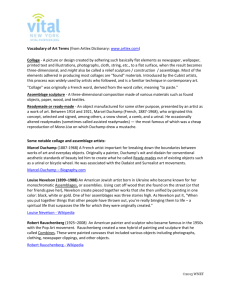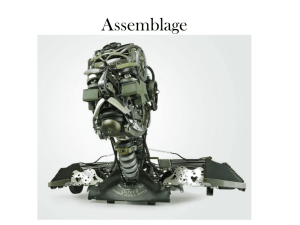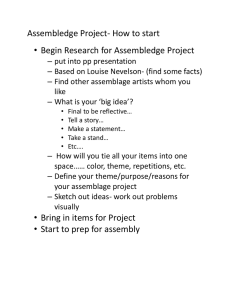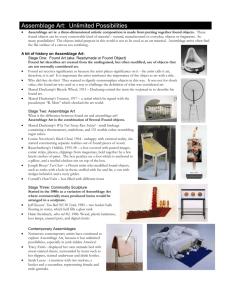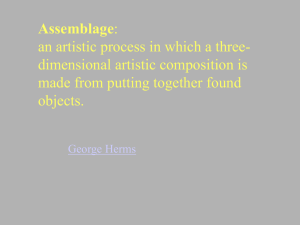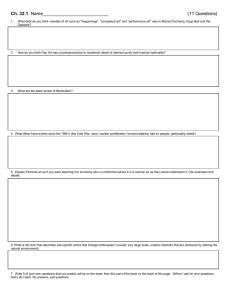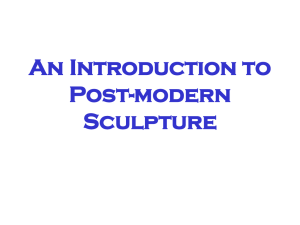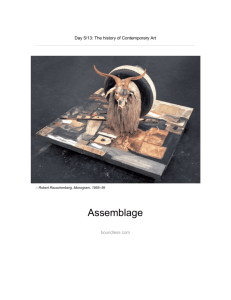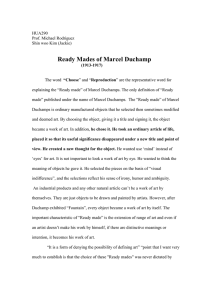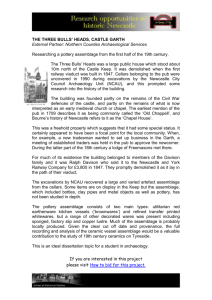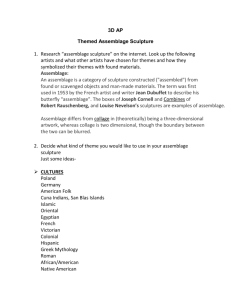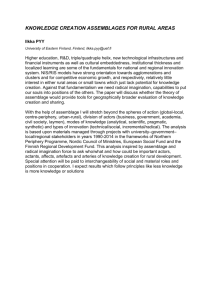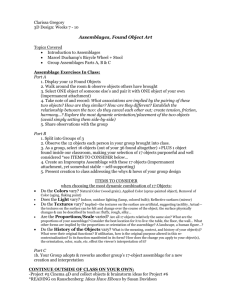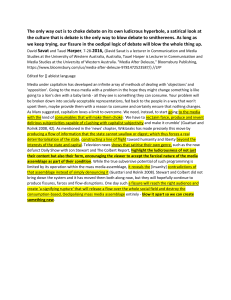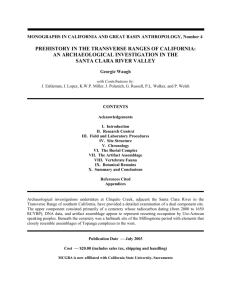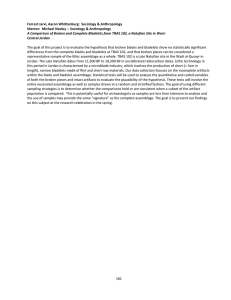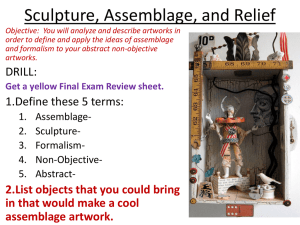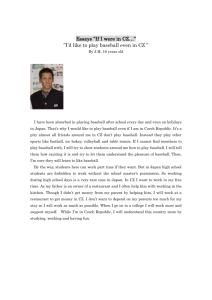Assemblage
advertisement
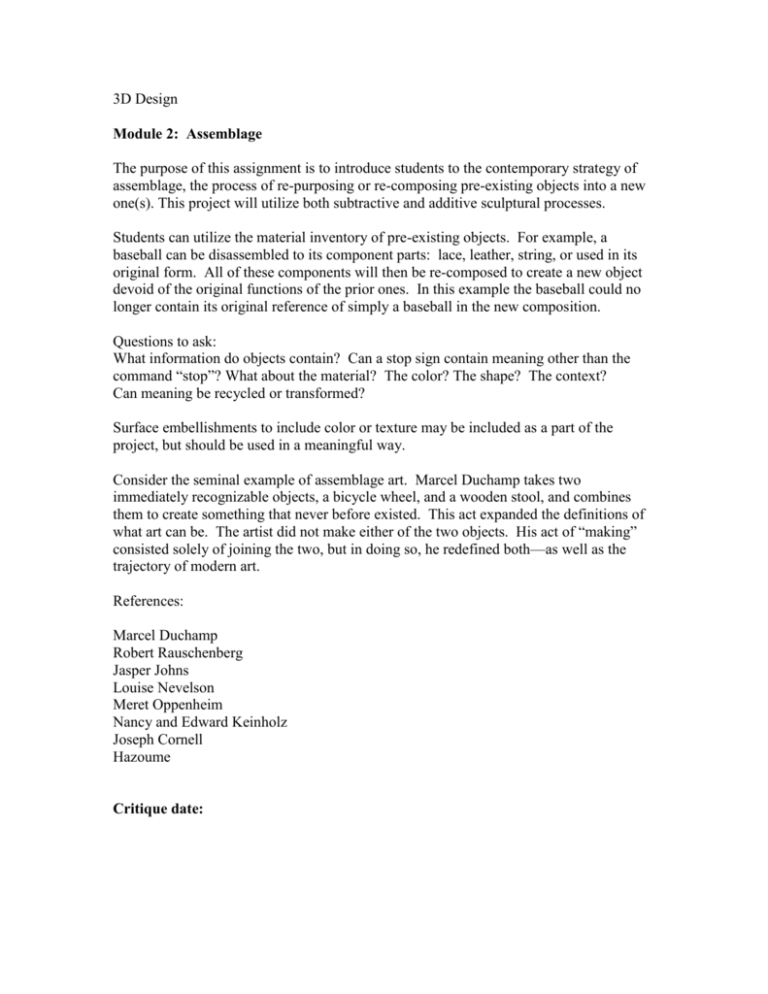
3D Design Module 2: Assemblage The purpose of this assignment is to introduce students to the contemporary strategy of assemblage, the process of re-purposing or re-composing pre-existing objects into a new one(s). This project will utilize both subtractive and additive sculptural processes. Students can utilize the material inventory of pre-existing objects. For example, a baseball can be disassembled to its component parts: lace, leather, string, or used in its original form. All of these components will then be re-composed to create a new object devoid of the original functions of the prior ones. In this example the baseball could no longer contain its original reference of simply a baseball in the new composition. Questions to ask: What information do objects contain? Can a stop sign contain meaning other than the command “stop”? What about the material? The color? The shape? The context? Can meaning be recycled or transformed? Surface embellishments to include color or texture may be included as a part of the project, but should be used in a meaningful way. Consider the seminal example of assemblage art. Marcel Duchamp takes two immediately recognizable objects, a bicycle wheel, and a wooden stool, and combines them to create something that never before existed. This act expanded the definitions of what art can be. The artist did not make either of the two objects. His act of “making” consisted solely of joining the two, but in doing so, he redefined both—as well as the trajectory of modern art. References: Marcel Duchamp Robert Rauschenberg Jasper Johns Louise Nevelson Meret Oppenheim Nancy and Edward Keinholz Joseph Cornell Hazoume Critique date:
